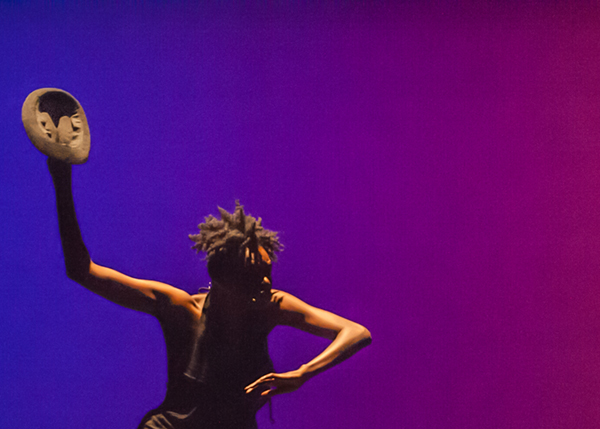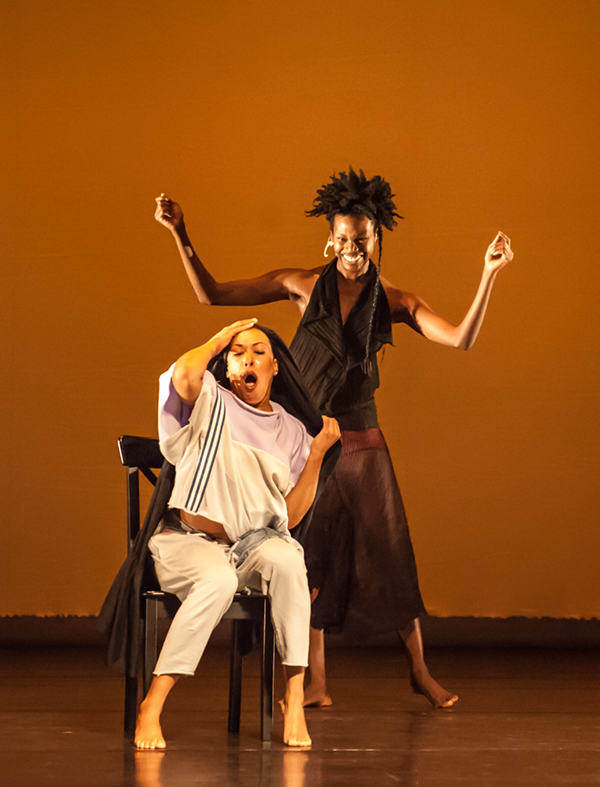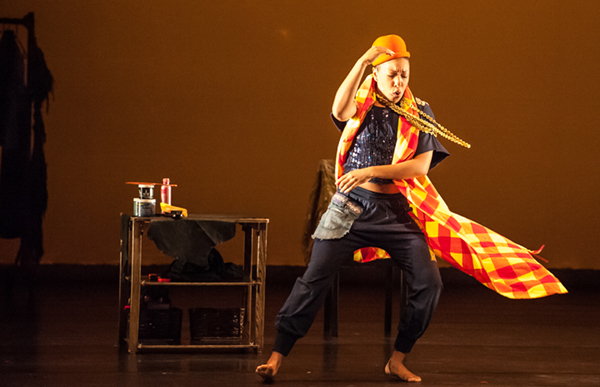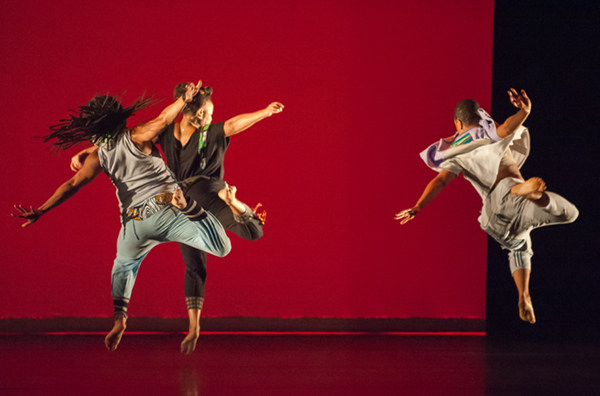Urban Bush Women Continues to Innovate
An Interview with Jawole Willa Jo Zollar and Chanon Judson
BY EMMALY WIEDERHOLT
Photos by Christopher Roesing from Hair & Other Stories
Urban Bush Women’s Founder/Visioning Partner Jawole Willa Jo Zollar and Associate Artistic Director Chanon Judson share the company’s involvement with the CUNY Dance Initiative, which offers available space through the CUNY university system to NYC dance artists. Chanon expands on Urban Bush Women’s creative process, and Jawole discusses the breadth of the company’s programs as well as her desire to see permanent ongoing opportunities for people of color.
~~
What has been Urban Bush Women’s involvement with the CUNY Dance Initiative (CDI) and how has it shaped the company’s practice?
Chanon: We’ve had two residencies with CDI. The first one was about two years ago at Baruch College. During both residencies, we worked on the creation of Hair & Other Stories, which we recently premiered. Urban Bush Women’s process is tried and true, but in terms of how the residencies shaped the creative practice, they were important because we’re a company that doesn’t have its own home. CDI allowed us to take up space, house prop ideas, and populate the space with things that allowed us to be generative within the artmaking. We were able to literally paper the walls with our prompts and then let them live there during the creative process.
At Baruch, we were rehearsing in a sublevel basement studio where the aesthetics of the physical space presented challenges in terms of thinking expansively, but because we had storage and accommodating hosts, we could come in at the beginning of the week and cover the room with the props, pictures, storyboards and literature that were strong resonators. Having the permission to reshape the space into a generative environment was just as important as the artmaking.
One of the other things embedded inside the residency was having the students at the college have interactions with the company in ways that were reciprocal and would feed the work. We were able to have some open studio times that weren’t necessarily performances, but allowed students to come in, see what we had on the walls, see small snippets of the work, and ask questions about it. It was important for us as artists to be able to get feedback in that way.
Our second residency at City College was exciting because we were able to float between two spaces, one being a stage. It’s such a luxury to mount work onstage because often we’re not able to get onto the stage of a venue until tech rehearsal. It was great to be able to look mid-house and back of house at how the work was registering. There was also a piano onstage, which we were able to use for vocal coaching.
Can you share a little about Give Your Hands to Struggle, the piece Urban Bush Women is presenting at the CUNY Dance Initiative’s 5th Year Fest, and why the company chose to present this work for the event?
Jawole: The work was created in 1998 and was inspired by a sermon by Dr. Adam Clayton Powell, “What’s in Your Hand,” where he looks at the story of David and Goliath. The sermon is about how people may feel small going up against a giant – like government or corporations – but we have power in our hands. I choreographed a work inspired by that sermon that focused on the legacies of those who have fought in liberation movements, especially for Black folk.
Chanon: Our reason for choosing that work for the CDI celebration is because the piece has been crafted in a way so that it’s not a passive experience, but literally asks folks in the audience to bring their voice and physicality to create a communal sharing. The speech asks folks to consider what’s in their hands, so we’ll be giving that same prompt to the audience to consider how we might lift our voices and realize what we’re capable of. The performance is not just Urban Bush Women, but shared with the community of the audience.
More generally, could you give an overview of the breadth of what Urban Bush Women does?
Jawole: Urban Bush Women is an entity that has several branches and arms. We are a performance ensemble made up of dancers, singers and DJs who create and perform work together. That’s historically been who we are. Then we began doing community engagement work that started to take us into looking at ourselves as activists. How do we not just do work that placates a community but also raises larger issues and facilitates processes that allows a community to think through those issue in an embodied way? That gave birth to our Summer Leadership Institute and our program BOLD (Builders, Organizers and Leaders through Dance). Those programs are the ways we’ve continued to be rigorous in our own examination of our practices and how we pass on our information as leaders and activists. How do we train others to do this work or be in the experience of this work? The Choreographic Center is our newest pillar, which asks: How do we strengthen the voices of women, in the largest definition of that word, and of African Americans in particular, who aren’t getting the same kind of traction that male choreographers get? The Choreographic Center is looking at not only supporting choreographers’ work but changing the conversations in the field. I noticed that experimentation and innovation is often seen through a white lens, and the work of people of color is not seen as innovative, when in fact it is breaking ground in how stories are being told. Those are our pillars.
Can you share a bit of your choreographic process and how a recent piece, like Hair & Other Stories, is developed?
Chanon: The seed for Hair & Other Stories was from Jawole’s 2001 work Hair Stories. Hair & Other Stories is a revisioning of that earlier work. The first brush stroke of our process was going through Hair Stories and looking for the nuggets that felt essential. We looked at the structure of the work in order to find out which components gave a dramatic turn or gave levity, for example. We looked at each module of the work to understand how they served the larger whole. When we went into the revisioning process, we looked for prompts that were relevant to what we were responding to in today’s landscape – conversations happening in the social justice sector, articles, YouTube videos, books, and our own stories and lived experiences that could push the larger group narrative. We evolved to include “other stories” in the title because, while there were some stories still relevant from the 2001 work, there were new stories we realized we needed to make new creative responses to. Samantha Speis, Urban Bush Women’s other associate artistic director, and I gave prompts, research assignments and provocations to guide the creative process. We also did workshops with guests who came in and pushed our thinking by adding information and coloring the palette.
Once we had a number of ideas and nuggets, either from the 2001 work or the new creative process, then we began collaging and puzzle-making. We asked: How does one piece inform the other? We don’t just have this happen first, this happen next; the work goes through several versions to find the best through-line. The version we had from our first residency at Baruch is different than what we premiered recently. About 80 percent of the work we create doesn’t make its way into the final product. We spend a lot of time in the generative process knowing that some of ideas that don’t make it into the final piece will help push the ideas that do.
Urban Bush Women has been around for 35 years – what kinds of shifts have you seen over the past three and a half decades with regards to representation of and opportunities for artists from communities that have historically been disenfranchised?
Jawole: I like to take a long view in that I do see some shifts now, but there were also shifts during Reconstruction. Those shifts did not last. I’ve seen momentary flurries, but I’m looking for a permanent shift, and not just a momentary response to pressure or what people feel like they should do. That’s the benefit of living long enough… I saw those shifts in the 60s and 70s, and a little bit in the 80s. I’m waiting to see that this is really a grounded shift and not a momentary reaction. I want this to be ongoing.
Going back to the CUNY Dance Initiative, why is CDI important for a healthy dance ecosystem?
Jawole: I can only speak about NYC, but I think universities have lots of unused space. On the other hand, trying to find rehearsal space is almost a fulltime job. There have been times when we’ve been in a different space every day. Can you imagine an administrator going to a different computer, desk and office every day? The CUNY Dance Initiative has been really important in gathering those unused campus spaces in a cohesive way. That’s revolutionary, and more communities across the country need this.
~~
To learn more about Urban Bush Women, visit www.urbanbushwomen.org, and to learn more about the CUNY Dance Initiative, visit www1.cuny.edu/sites/dance-initiative.




